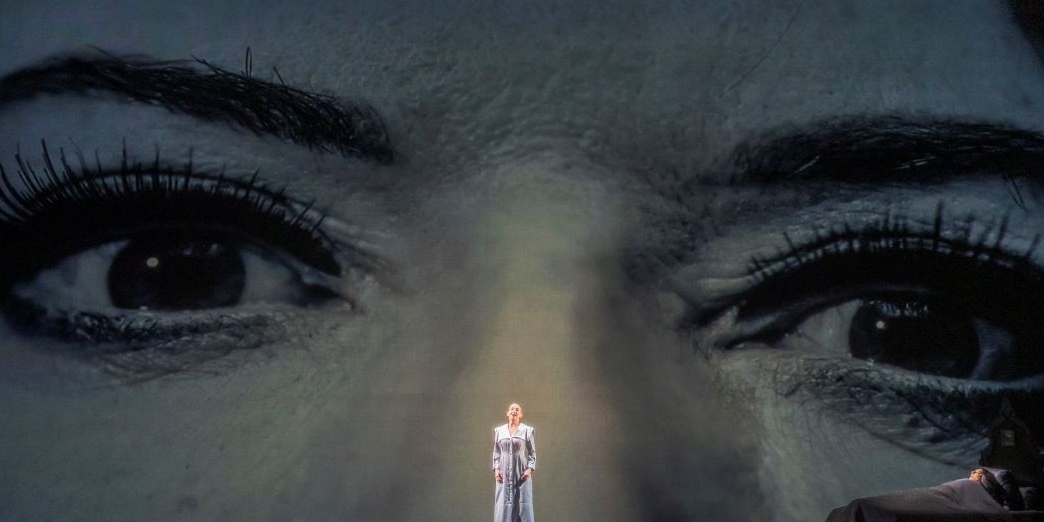Cecilia Sophia Anna Maria Kalougeropoulos, better known as Maria Callas was born on 2nd December 1923. Plump and awkward, she lost many kilos becoming the stunningly beautiful, bejewelled, most famous opera star in 20th century, known for compellingly dramatic performances of searing intensity, including a passionate private life especially with Aristotle Onassis, who liked her superstar status, had no appreciation for her art. Her voice and health deteriorated with him, due to drink, drugs, parties; cruelly cast aside to marry Jackie Kennedy, she disappeared in deep depression dying at 53, in 36, Avenue Georges-Mandel, Paris – a plaque outside commemorates her. She was the greatest operatic voice ever known.
Tributes to Callas (La Divina) have appeared world-wide all year. The Greek National Opera have organised many events: a Maria Callas Museum has just opened in Athens. A new gold statue has just been unveiled near the Acropolis, which has been subject of much criticism – Star Wars C3PO? – Gandi in heels? Metopera are doing a Tributary concert. ROH has had a Callas exhibition running since July. There is a Callas hologram tour with live orchestra which astounded audiences as she appears singing in 3D.
Serbian Marina Abramović conceived this Callas opera project as a homage and exploration of the great prima-donna; this coincides with her retrospective exhibition at the RA. The project has been touring since 2020, using multimedia to combine opera, theatre, music, film and speech. Renowned for her performance art, this show attracts Abramović and Callas fans.
The show is set in Callas’ apartment. Abramović as Callas spends most of the time lying in bed remembering her past glories via seven supposedly signature roles, performed by seven different singers. These chosen roles all die, hence the 7 Deaths – Violetta (no fil-di-voce on ‘tutto fini’ in the score and poor Italian), Tosca, Cio-cio-San/Butterfly, Carmen, Desdemona, Lucia (no top note at the end), and Norma (slightly flat) all sung by different singers of varying abilities who later appear as maids in Callas’ Paris apartment covering everything in black after Callas’ death. The chosen arias are mostly not those where the heroine dies.
The chosen roles are poorly researched. Callas never sang Desdemona or Carmen on stage, and Cio-cio-San/Butterfly very few times at the beginning of her career, none appropriate for her dramatic voice. Medea, Gioconda and Lady Macbeth are more appropriate. Very few singers have dared to take on Medea since Callas, ‘suicidio’ from Gioconda is unforgettable, and Lady Macbeth was blood-curdlingly intensely dramatic. These would have been better choices, though not easy finding appropriate singers.
Seven poorly-lit singers of varying abilities dressed in grey as maids sing from each chosen opera, whilst Abramovic and William Dafoe upstage them, acting out scenes on a huge screen behind with blood, blood and more blood and so many smashed mirrors and vases it was tedious; the gender swap for Norma is grotesque and not dramatic. Between the arias are swirling mists, rambling spoken thoughts by Abramović. During Vissi d’arte, Abramović falls from a skyscraper in slow-motion. During ‘Un bel di’ Abramović with a little boy waving an American flag as Dafoe takes the boy, all in hazmat suits. The red bicycle informs us this is Hiroshima. Abramovic removes the suit to die. Desdemona instead of being suffocated, is strangled by snakes – more appropriate for Medea. The best singer is fast-rising mezzo Aigul Akhmetshina (Carmen is a mezzo part, hence why Callas never performed it onstage) as Carmen.
The Coliseum was packed even to the top circle. Most were Abramović fans; some never having been to the opera before. There was little Callas content to whet their appetite to hear more. Those coming for Callas would be disappointed. The concept was a good idea but this show is neither a homage nor an exploration of Callas, instead dedicated to Abramović’s self-obsession. We learn nothing about Callas, we see no photos onstage or in the programme nor are we allowed to hear her voice except briefly at the end, which is what made her extraordinary. Why use singers who cannot remotely evoke what Callas could? Using Callas’s vocal and visual recordings would have made a superior show.
Abramović, mostly in her bed, appears at the end in a gold shimmery outfit, like the much-criticised statue and we finally, briefly hear Callas. Once we hear the real Callas, the whole show suddenly becomes a hollow sham. It was Callas’ voice which made her the superstar Abramović can never be.

